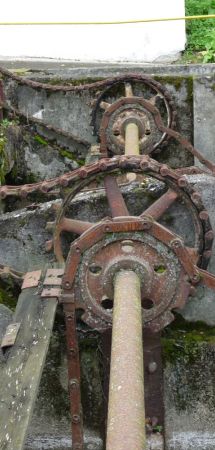
Wastewater can be seen as a source of energy, valuable matter (nitrogen, phosphorus, heavy metals) or pure water. The energy of the organic compounds contained in wastewater and sewage sludges can be recycled using anaerobic technologies, i.e. anaerobic digestion (AD). Biogas (mixture of methane and carbon dioxide), which is the end product of anaerobic digestion, can be further utilized as a source of electricity and heat. The AD process is especially favorable for its low green house gasses production.
Work group Anaerobic Biotechnology deals with optimizing the AD processes and solving some specific problems inherent to AD such as removing (recycling) nitrogen and sulfur compounds released in the AD process. The work group aims to protect natural resources (clean water, fossil energy sources or atmosphere) through employing clean anaerobic technologies.
List of Publications
Projects and Grants
Research areas
Energetically Self-sufficient Wastewater Treatment Plant
The work group Anaerobic Biotechnology has a long-term interest in anaerobic digestion of sewage sludges at wastewater treatment plants (WWTPs). The goal of this effort is energy recovery from sewage sludges in order to cover most of the energy consumption of the WWTP. As an example, the central WWTP in Prague is energetically self-sufficient by almost 90 %. This was achieved by introducing sludge disintegration in thickening centrifuges, introducing thermophilic AD process, improving mixing in digestors and intensive precipitation of the particulate organic matter contained in the incoming wastewater. Applying these measures, we achieved two-fold increase of biogas production at WWTP Prague.
Optimizing anaerobic fermentation of lignocellulosic materials by using anaerobic fungi
The numbers of biogas stations have recently been quickly rising throughout the Europe. In these biogas stations, energy crops, agricultural wastes and other types of organic wastes are transformed to biogas - an alternative source of green energy. Unfortunately, lignocellulosic material (plants and their debris) treated in the biogas stations is not readily degradable: only 40–60 % of the total organic matter can be transformed to methane in the classical AD process. This problem can be solved using anaerobic fungi capable of degradation of cellulosic materials. In nature, these microorganisms occur in rumens of ruminants such as cow or deer, where they help these animals to degrade lignocellulosics. By introducing anaerobic fungi into anaerobic digesters, methane production of the biogas plants can increase by up to 20 %.
H2S removal from biogas
H2S is source SO2 emissions, odour problems and operational problems during burning biogas in cogeneration units. Therefore, it is crucial to remove H2S from biogas. Biological methods for H2S removal from biogas are based on H2S oxidation to elemental sulphur by chemolithotrophic bacteria:
H2S + 0.5O2 --> S0 + H2O
This process can take place in external bioreactor following H2S scrubbing from biogas. It can also be induced inside the anaerobic reactor by introducing small amount of oxygen – so called “microaeration”. Both processes are efficient and our results have shown that microaeration has additional positive effects on the AD process such as better hydrolysis of organic compounds. In general, biological methods for H2S removal are always cheaper and simpler than physical-chemical H2S removal.
Nitrogen removal from liquid effluents from anaerobic digesters
The effluents from anaerobic digesters often contain high loads of ammonium nitrogen. At high concentration, ammonium nitrogen can inhibit the anaerobic digestion (AD) process and, when treated at WWTP, it considerably increases the nitrogen load at the WWTP. Compared to the common nitrification/denitrification process, the nitritation/denitritation process can significantly decrease the consumption of oxygen (by 25 %) and organic substrate (by 40 %) needed for ammonium removal from the liquid phase. Therefore it is intensively studied at our work group. Next to this, we also study methods for nitrogen removal directly from the anaerobic digester, e.g. by sorption on zeolites.
